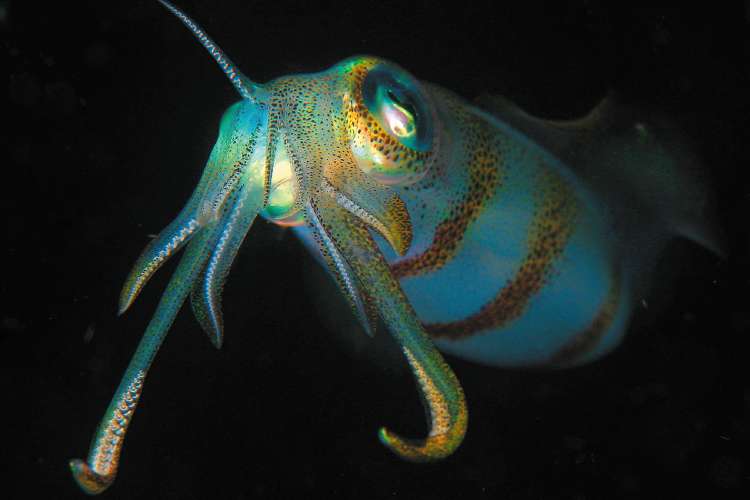Squid's in: British diners develop taste for tentacles

For decades it was merely a slightly exotic option for holidaymakers in Spain, Italy and Greece, but a growing number of cooks experimenting with recipes involving tentacles and black ink have turned squid into a fashionable dish in British kitchens.
Although still less popular than other seafood such as prawns, the amount of squid sold in the UK has risen by 49 per cent in the past 12 months, according to the industry body Seafish.
The cephalopod's new-found popularity owes much to the growing appeal of fruits de mer and to the promotion of a Mediterranean diet popular in Italy, France and Spain, where it is cut into rings and fried.
Among the chefs who have encouraged the eating of squid is Rick Stein, whose gastronomic tour of the Mediterranean was televised by the BBC last year. He suggested serving sautéed squid and chorizo with garlic, rocket, tomatoes and chick peas.
Seafish, which monitors industry trends, suggested that changing tastes as well as the economic downturn were encouraging people to experiment with squid. "In a climate of rising food prices, fresh squid... is relatively inexpensive, making it the ideal dinner choice for those wanting to keep a tight hold on the purse strings," said the organisation.
The dish is a common feature on menus in Spain, France, Italy, Greece and Turkey, often appearing on menus as calamari. The Spanish serve squid in its ink in the dish Calamares en su tinta while Croatians grill it stuffed with cheese.
Further afield, squid is a common ingredient in sashimi and sushi in Japan and the cuisine of other Asian countries such as China and South Korea.
The creature, which has eight legs and two tentacles, propels itself by sucking in and expelling water and squirts ink from its body to confuse predators.
Stocks can now be found off the coast of the UK in the summer, having migrated from southerly seas. Seafish says squid populations are abundant, having carried out research in south-west England and north-east Scotland to investigate the best catching methods and understand more aboutsustainability. As well as monitoring discards, researchers filmed squid behaviour on an underwater video camera to observe how they behaved in the vicinity of trawls. "The good news is that we found only a minimum amount of discarding taking place within this fishery – meaning it is mostly just squid being caught in the trawls," said Mike Montgomerie, the project co-ordinator.
An Aberdeen University study of the biological and environmental aspects of UK squid stocks will be published later this year.
Philip MacMullen, head of environment at Seafish, said: "By monitoring squids' behavioural patterns, we can help to safeguard marine life and environment and ensure Brits continue to enjoy this delicacy for years to come."
Squid usually grow no longer than two feet but giant squid can be 13 metres and colossal squid are even bigger, up to 14 metres.
The giant squid, reputed to have the biggest eyes in the animal kingdom, has loomed large in the folklore of the high seas, appearing in Jules Verne's 20,000 Leagues Under the Sea. Although the Italian fish chef Aldo Zilli suggested that a giant squid washed ashore in Japan in 2005 would feed 30 people (he suggested it be tenderised withtwo bottles of chianti and sautéed in garlic and chilli), the creature is inedible, on account of its high ammonia content.
A truly versatile catch
Almost every part of a squid has some use in cooking. The only bits which aren't edible are the hard beak and the gladius, a feather-shaped blade that supports the body. While in Mediterranean countries squid rings are often served as a tasty, deep-fried starter, in Malaysia and India the body is left whole and used to make gulai sotong. It also features in Chinese cuisine, either floating in seafood soups or as a main dish with chilli over rice. In Greece, the body is filled with rice and vegetables to make yemista kalamari, and the Spanish often eat it as part of a seafood paella with mussels and prawns. Even the ink is usable: it is most commonly found in squid ink risotto, a rice dish thought to have originated in Venice and famous for its delicate taste and unusual black colour.
Chris Green
Join our commenting forum
Join thought-provoking conversations, follow other Independent readers and see their replies
Comments